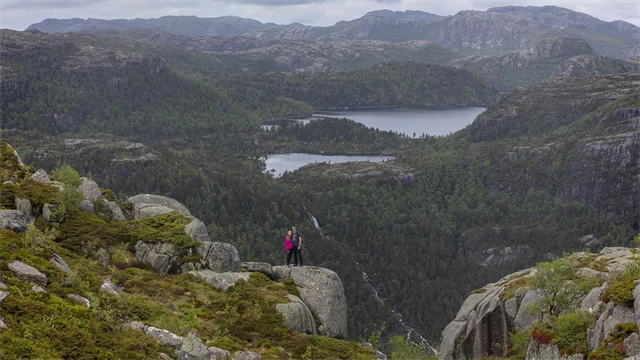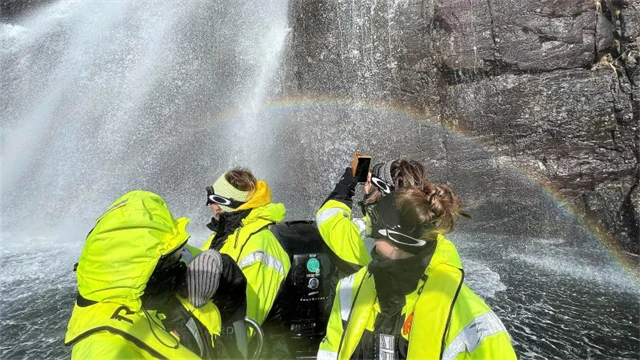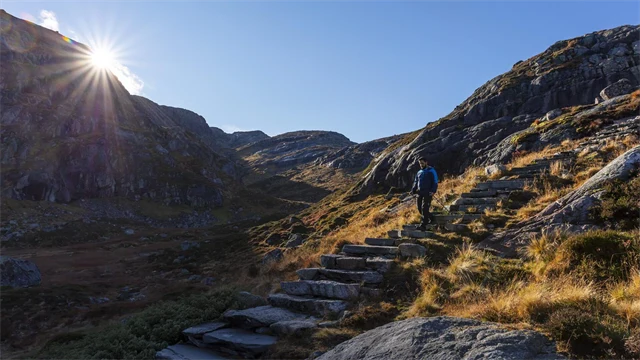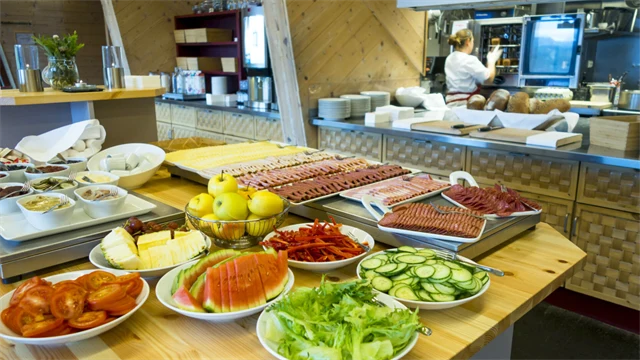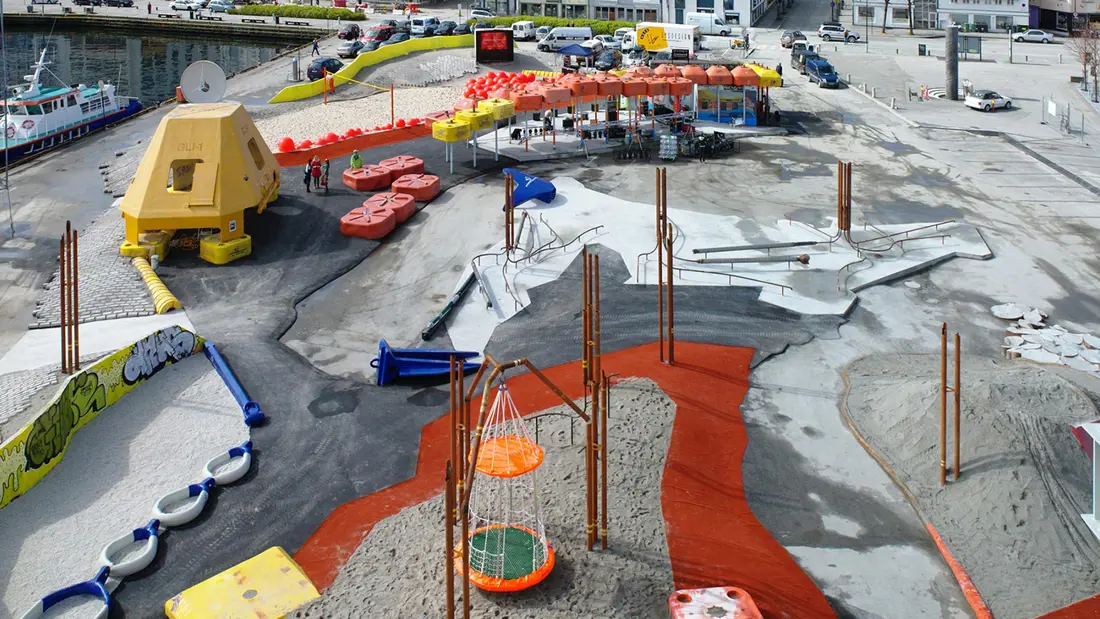Rush Trampoline Park
Here you literally get a proper lift. Rush trampoline park has trampolines on the walls and floors, as well as laser traps, gladiator battles and various other games and toys. Among other things, you can try the hilarious WipeOut challenge, which tests how good you are at staying on your feet. There are only a limited number of places in the park, so it is advisable to book your tickets in advance.
Kongeparken
Stavanger is an amusing city, and Kongeparken is a favourite among local fans and enthusiastic tourists alike. Kongeparken is one of Norway’s five major amusement parks, and Rogaland’s biggest tourist attraction. Here you will find bob tracks, radio cars, carousels, roller coasters and even a separate hotel for teddy bears. A perfect place for the family, especially if you have children between 3 and 12 years.
The Jæren beaches
No, it’s not the Maldives, nor Spain. The Jæren beaches' large sand dunes are a sight in themselves, and a great place to enjoy the sea, one way or another.. Along the Jæren beaches you will find Norway’s best surfing conditions, where for instance Eurosurf and Eurosurf Junior are organised annually. Young and old use the beaches for ball games, surfing, kite surfing, SUP paddling, picnics and other activities, and in the area you also get to experience exciting bird and plant life.
Stavanger Botanical Garden
This is a mecca for green souls. Here you will find a variety of plants from all over the world, with more than 3,000 different species and varieties available. Stavanger Botanical Garden also has their own greenhouse, and there are a number of benches and grassy areas suitable for picnics. In addition, you get a really nice view of Jæren, Hafrsfjord and the North Sea. Free entry and open all year round.
Flor & Fjære
Is it time for a little break from the city centre? Then visit this tropical oasis. Hop aboard the ferry that takes you to the island with gardens full of green plants and palm trees. The small island also has its own restaurant, which is highly praised by the locals.
Lysefjord and Preikestolen
Lysefjord is one of the southernmost fjords in Norway and over 40 kilometres long. The fjord is the gem of the Stavanger region and can be enjoyed in different ways. For the thrill-seekers, a RIB safari might be just the ticket, or how about a trip up the longest wooden staircase in the world near the idyllic village of Flørli?
The world-famous Preikestolen is also a must for nature-loving visitors. Preikestolen or the Pulpit Rock towers 604 metres above the outer part of Lysefjord and is one of the country’s most spectacular images. The main season is from April to October, and the hike takes about 4 hours to complete.
Kjerag and the Kjerag Bolt
For a more demanding hike in Lysefjord, we recommend the 6–7 hours (10 km) long route to Kjerag. Most of the hike is across bare mountains, but chains have been laid out so that you can hold on in steep sections. This might not be the trip for the newly converted nature lovers, but the view at the top is worth the effort for many. For the best holiday photo, we suggest you check out the Kjerag Bolt.
Pottemakeriet
In the heart of Stavanger’s city centre is the Pottemakeriet, a working pottery workshop and shop that also hosts pottery courses and team building evenings. Here you will meet potter Sonya Molohon, who has a craft certificate in pottery and is inspired by pottery traditions in Norway dating back to the 18th century. Courses and other events must be booked in advance.
Quest rooms
Time to challenge your mind? Quest Rooms are a form of Escape Room, where you are investigators who need to work together to solve challenges, crack codes and collect evidence. Logical thinking and collaboration skills apply here, and those who win get out first.







